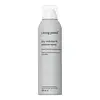What's inside
What's inside
 Benefits
Benefits

No benefits
 Concerns
Concerns

 Ingredients Side-by-side
Ingredients Side-by-side

Sd Alcohol 39-C
AstringentButane
Propane
Octylacrylamide/Acrylates/Butylaminoethyl Methacrylate Copolymer
Isobutane
Alpha-Isomethyl Ionone
PerfumingAminomethyl Propanol
BufferingBenzyl Salicylate
PerfumingButylphenyl Methylpropional
PerfumingCetearyl Ethylhexanoate
EmollientCoumarin
PerfumingParfum
MaskingHexyl Cinnamal
PerfumingIsopropyl Myristate
EmollientLinalool
PerfumingPanthenol
Skin ConditioningPPG-12 Dimethicone
Skin ConditioningPropylene Glycol
HumectantWater
Skin ConditioningSd Alcohol 39-C, Butane, Propane, Octylacrylamide/Acrylates/Butylaminoethyl Methacrylate Copolymer, Isobutane, Alpha-Isomethyl Ionone, Aminomethyl Propanol, Benzyl Salicylate, Butylphenyl Methylpropional, Cetearyl Ethylhexanoate, Coumarin, Parfum, Hexyl Cinnamal, Isopropyl Myristate, Linalool, Panthenol, PPG-12 Dimethicone, Propylene Glycol, Water
Hydrofluorocarbon 152a
Alcohol Denat.
AntimicrobialVp/Va Copolymer
Va/Crotonates/Vinyl Neodecanoate Copolymer
Calcium Sodium Borosilicate
Water
Skin ConditioningCyclodextrin
AbsorbentZeolite
AbsorbentParfum
MaskingEthylcellulose
Propylene Glycol Dibenzoate
Skin ConditioningAminomethyl Propanol
BufferingAmmonium Glycyrrhizate
MaskingLinalool
PerfumingCitronellol
PerfumingCitral
PerfumingLimonene
PerfumingEthyl Linalool
MaskingMethyldihydrojasmonate
MaskingLinalyl Acetate
MaskingDipropylene Glycol
HumectantAmyl Salicylate
PerfumingPentadecalactone
MaskingTetramethyl Acetyloctahydronaphthalenes
MaskingIonone
AstringentCyclamen Aldehyde
MaskingHydrofluorocarbon 152a, Alcohol Denat., Vp/Va Copolymer, Va/Crotonates/Vinyl Neodecanoate Copolymer, Calcium Sodium Borosilicate, Water, Cyclodextrin, Zeolite, Parfum, Ethylcellulose, Propylene Glycol Dibenzoate, Aminomethyl Propanol, Ammonium Glycyrrhizate, Linalool, Citronellol, Citral, Limonene, Ethyl Linalool, Methyldihydrojasmonate, Linalyl Acetate, Dipropylene Glycol, Amyl Salicylate, Pentadecalactone, Tetramethyl Acetyloctahydronaphthalenes, Ionone, Cyclamen Aldehyde
 Reviews
Reviews

Ingredients Explained
These ingredients are found in both products.
Ingredients higher up in an ingredient list are typically present in a larger amount.
Aminomethyl Propanol is used to adjust the pH of products. It is also used as a base to create other organic compounds. Having a balanced pH is important for protecting your skin.
Aminomethyl propanol is safe to use in cosmetics up to 1%. It is soluble in water.
Linalool is a fragrance and helps add scent to products. It's derived from common plants such as cinnamon, mint, citrus, and lavender.
Like Limonene, this ingredient oxidizes when exposed to air. Oxidized linalool can cause allergies and skin sensitivity.
This ingredient has a scent that is floral, spicy tropical, and citrus-like.
Learn more about LinaloolParfum is a catch-all term for an ingredient or more that is used to give a scent to products.
Also called "fragrance", this ingredient can be a blend of hundreds of chemicals or plant oils. This means every product with "fragrance" or "parfum" in the ingredients list is a different mixture.
For instance, Habanolide is a proprietary trade name for a specific aroma chemical. When used as a fragrance ingredient in cosmetics, most aroma chemicals fall under the broad labeling category of “FRAGRANCE” or “PARFUM” according to EU and US regulations.
The term 'parfum' or 'fragrance' is not regulated in many countries. In many cases, it is up to the brand to define this term.
For instance, many brands choose to label themselves as "fragrance-free" because they are not using synthetic fragrances. However, their products may still contain ingredients such as essential oils that are considered a fragrance by INCI standards.
One example is Calendula flower extract. Calendula is an essential oil that still imparts a scent or 'fragrance'.
Depending on the blend, the ingredients in the mixture can cause allergies and sensitivities on the skin. Some ingredients that are known EU allergens include linalool and citronellol.
Parfum can also be used to mask or cover an unpleasant scent.
The bottom line is: not all fragrances/parfum/ingredients are created equally. If you are worried about fragrances, we recommend taking a closer look at an ingredient. And of course, we always recommend speaking with a professional.
Learn more about ParfumWater. It's the most common cosmetic ingredient of all. You'll usually see it at the top of ingredient lists, meaning that it makes up the largest part of the product.
So why is it so popular? Water most often acts as a solvent - this means that it helps dissolve other ingredients into the formulation.
You'll also recognize water as that liquid we all need to stay alive. If you see this, drink a glass of water. Stay hydrated!
Learn more about Water